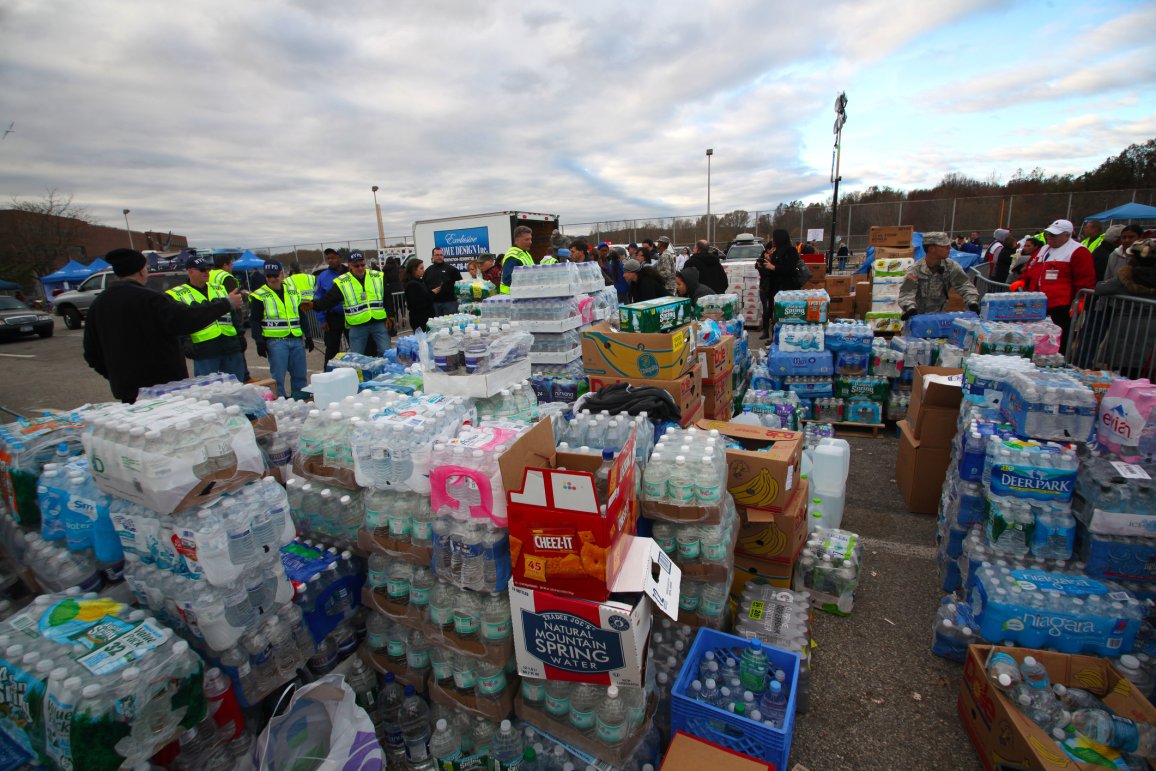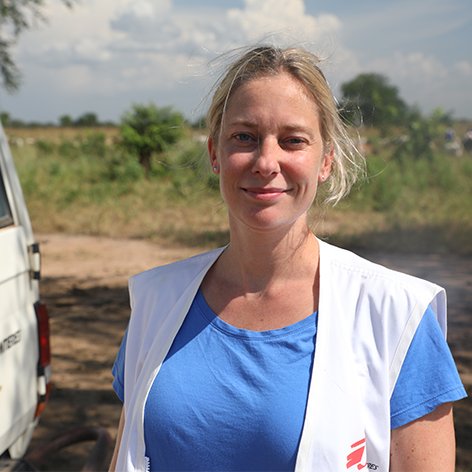Plastic enables prompt assistance
What if we had to cope with natural and environmental disasters without any plastic at all? Part 2 of our series ‘A World Without Plastic’ focuses on humanitarian aid and disaster relief.

Fast and coordinated assistance
Where war, fires, droughts, earthquakes, tsunamis, avalanches, floods, and epidemics threaten survival, fast and coordinated assistance is needed. Every second counts. Disasters often render transport routes impassable. Without radios, off-road vehicles, helicopters, and aircraft, valuable time is lost. At the same time, transport volumes drop dramatically. Without motor vehicles, horsepower is needed. In the mountains, mules carry people and materials to the site of the disaster.
Emergency shelters are built using wooden slats, metal pipes, and lengths of fabric. This takes time, and hygiene conditions are limited. In a world without plastic, there is a lack of mobile sanitary facilities and clean, sterile emergency medical equipment. Easy-to-use technology is sorely missed when it comes to securing danger zones, searching for missing persons, and evacuating people. The lack of plastic weighs heavily on the supply of food and drinking water. When fewer life-saving supplies are moved more slowly, thirst and hunger grow. Diseases spread more quickly.
Disaster control and plastics
This thought experiment conjures up depressing black-and-white images of field hospitals. At the same time, it shows how closely the achievements of disaster control are linked to the rise of synthetic materials. Thanks to their versatility, low weight, and durability, plastics make many things possible that were previously unthinkable. Without them, the number of victims would be significantly higher.
Disaster control units and humanitarian organizations travel to the people by air, land, and sea using off-road vehicles, helicopters, and ships. They carry relief supplies such as food, drinking water, clothing, and medicine. Plastics play a central role as durable and lightweight materials. They preserve goods and keep them clean and hygienic. Compact packaging increases transport volume, allowing more relief supplies to arrive faster. Plastic tents for temporary shelters, kitchens, and sanitary facilities save time during assembly and disassembly. Just as important as functional diversity and ease of use is the cost factor. Plastics make humanitarian aid affordable worldwide in the first place.
Technological advances
Depending on the type of disaster, aid workers bring technical equipment such as sandbags, pumps, hoses, inflatable boats, life jackets, power generators, lamps, and heaters. Except for jute bags, none of these items can do without plastic components. And even when it comes to sandbags, polypropylene models score points as an inexpensive and durable alternative. Plastics reduce weight and are suitable for use in extreme conditions. They are highly resilient and can withstand environmental influences such as heat and moisture for a particularly long time. This makes them the material of choice for all kinds of protective clothing: from helmets, gloves, jackets, and pants to boots.
In addition to basic technical equipment, various electronic products are enhancing disaster control in the 21st century. Whether under avalanches, rubble, or in rough terrain, drones, thermal imaging cameras, and night vision devices increase the chances of success when searching for missing persons. Communication, coordination, and navigation are usually carried out via radio and GPS. Chemical, biological, or nuclear accidents require special products for decontamination and drinking water treatment. All of this would be difficult to imagine without plastic elements.
Change of perspective: External expertise
Alexandra Malm, Strategic Communications Advisor for Planetary Health at Médecins Sans Frontières in the Geneva Operations Center, on plastics in disaster relief.

Alexandra Malm. (Photo: Médecins Sans Frontières)
From emergency equipment to water canisters and tents: plastic items facilitate rapid assistance. What would work in crisis areas look like without them?
Médecins Sans Frontières requires a wide range of materials and equipment for emergency medical aid and humanitarian programs worldwide. Many of these items are made of plastic or contain plastic components, such as tents, tarpaulins, and disposable medical supplies. Our equipment is equivalent to that used in hospitals in Europe and other parts of the world. The health facilities where Médecins Sans Frontières operates are heavily dependent on the alternatives available on the market. We are open to more environmentally friendly options. However, a large proportion of humanitarian materials are made of plastic, as this material is the easiest and quickest to obtain. Médecins Sans Frontières is aware of the negative environmental impact – especially as this can also affect the health of the people we help. That is why we are working to reduce our carbon footprint and environmental impact, including with regard to the products we use.
Where is plastic indispensable for healthcare, and what alternatives are there?
A large proportion of the materials and equipment used by healthcare providers worldwide are made of plastic and therefore contribute significantly to CO2 emissions. This material is crucial for the medical work of Médecins Sans Frontières. We are currently working to find and implement solutions that are less harmful to the environment but still retain their medical effectiveness and impact. We are exploring the possibility of switching to alternative medical materials, such as recycled plastic items, and are working to reduce the consumption of non-surgical examination gloves. Our medical teams in Lebanon have reduced glove consumption by 40 percent after an internal campaign reminded them when to use medical gloves when working with patients and when not to. We plan to run similar campaigns in several countries this year.
What role do waste prevention and the circular economy play in MSF's operations – and what are the biggest challenges in this regard?
One of the biggest challenges we face is the lack of suitable and safe recycling structures in the contexts in which we operate. In industrialized countries, waste management is heavily subsidized, which enables functioning recycling streams and ultimately the establishment of a circular economy. In many countries, despite some promising individual approaches, we are still a long way from such structures. Another major hurdle on the path to a functioning circular economy in the medical sector is the lack of available alternatives from the pharmaceutical industry – as well as strict regulations that significantly restrict the use of existing options, such as reusable breathing tubes or certain textiles.
High hopes were recently placed on the Global Plastic Pact, with the expectation that it would trigger change in the plastics industry. However, during the negotiations, the pharmaceutical industry managed to completely exempt itself from any potential requirements that would have resulted from the new regulation. Against this backdrop, the most important measure for better waste management is to reduce the amount of waste itself. We are therefore focusing specifically on avoiding waste and producing less of it – for example, by reducing medical and non-medical disposable materials. Wherever possible, we prefer reusable alternatives. In addition, we develop context-specific waste management plans to identify suitable solutions locally – with the aim of recycling more materials or at least ensuring safe disposal.
Do you like our texts? Perhaps even so much that you want to use them in your own media? Then please get in touch with us beforehand!
